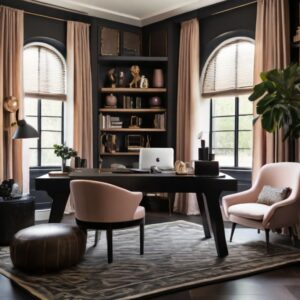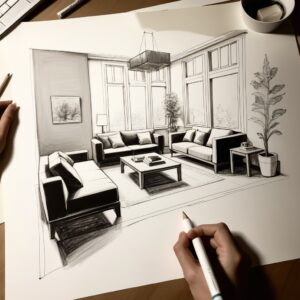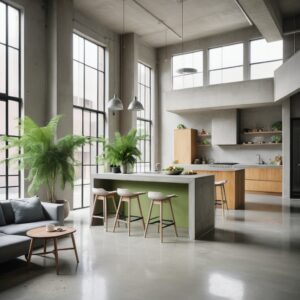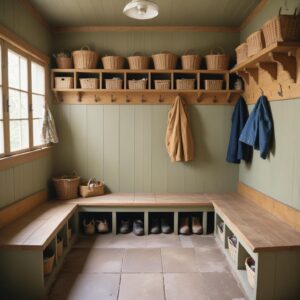In the world of interior design, space management is a crucial element that can make or break the functionality and aesthetic appeal of any room. Effective space management ensures that a space is not only visually pleasing but also practical and comfortable. No matter if you’re working with a sprawling mansion or a compact apartment, mastering the art of space management is essential. Here’s how you can optimize your interiors for maximum impact and usability.
Understanding the Basics
Space management in interior design revolves around the optimal use of available space to enhance both form and function. It involves careful planning and strategic arrangement of furniture, décor, and utilities to create a harmonious and efficient living environment. The key is to strike a balance between aesthetics and practicality.

Start with a Clear Plan
Before diving into decorating, it’s essential to have a clear plan. Measure your space and create a floor plan to visualize where each piece of furniture and décor item will go. Tools like computer-aided design (CAD) software or simple graph paper sketches can be incredibly helpful. Consider traffic flow, natural light sources, and the primary purpose of the room.

Prioritize Functionality
Every room has a primary function, and your design should support this. For instance, a living room should encourage relaxation and social interaction, while a kitchen needs to be efficient for cooking and dining. Select furniture and accessories that support the room’s purpose and avoid cluttering it with unnecessary items.

Zone Your Space
In open-plan areas, it’s important to create distinct zones for different activities. Use rugs, furniture arrangements, and lighting to define separate areas for lounging, dining, and working. This helps to organize the space and gives each area a specific purpose, enhancing functionality.

Maximize Storage Solutions
Storage is a key component of space management. Incorporate multifunctional furniture like ottomans with storage, beds with drawers underneath, or built-in shelving. Utilizing vertical space with tall bookcases or wall-mounted cabinets can also help keep clutter off the floor and make a room feel more spacious.

Embrace Minimalism
Less is often more when it comes to space management. A minimalist approach can make a room feel larger and more open. Choose a few statement pieces rather than overcrowding the room with furniture. Keep surfaces clean and uncluttered, and use décor items sparingly to create a serene and organized atmosphere.

Use Mirrors and Light Colors
Mirrors and light colors can significantly enhance the perception of space. Mirrors reflect light and create the illusion of depth, making a room appear larger. Light colors on walls, ceilings, and furniture can open up a space, while dark colors tend to make rooms feel smaller and more enclosed.

Invest in Multi-Purpose Furniture
Furniture that serves multiple purposes is a game-changer for space management. Consider sofa beds, extendable dining tables, or desks that double as vanity units. These versatile pieces can adapt to your needs and make the most of limited space.

Optimize Lighting
Proper lighting can transform a space. Use a mix of ambient, task, and accent lighting to create a well-lit, inviting environment. Natural light should be maximized through the use of sheer curtains or strategically placed mirrors. Adequate lighting not only enhances the aesthetics but also improves the usability of a space.

Personalize with Care
While it’s important to keep a space uncluttered, personal touches are what make a house a home. Carefully curated décor items, artwork, and personal mementos can add character and warmth to a space without overwhelming it. The key is to strike a balance between personalization and practicality.
Effective space management is about creating a harmonious blend of form and function. By planning carefully, prioritizing functionality, and using smart design strategies, you can transform any space into a well-organized, aesthetically pleasing, and comfortable environment. Whether you’re revamping a single room or designing an entire home, these principles will help you make the most of your space and create a home that truly works for you.

Leave a Reply